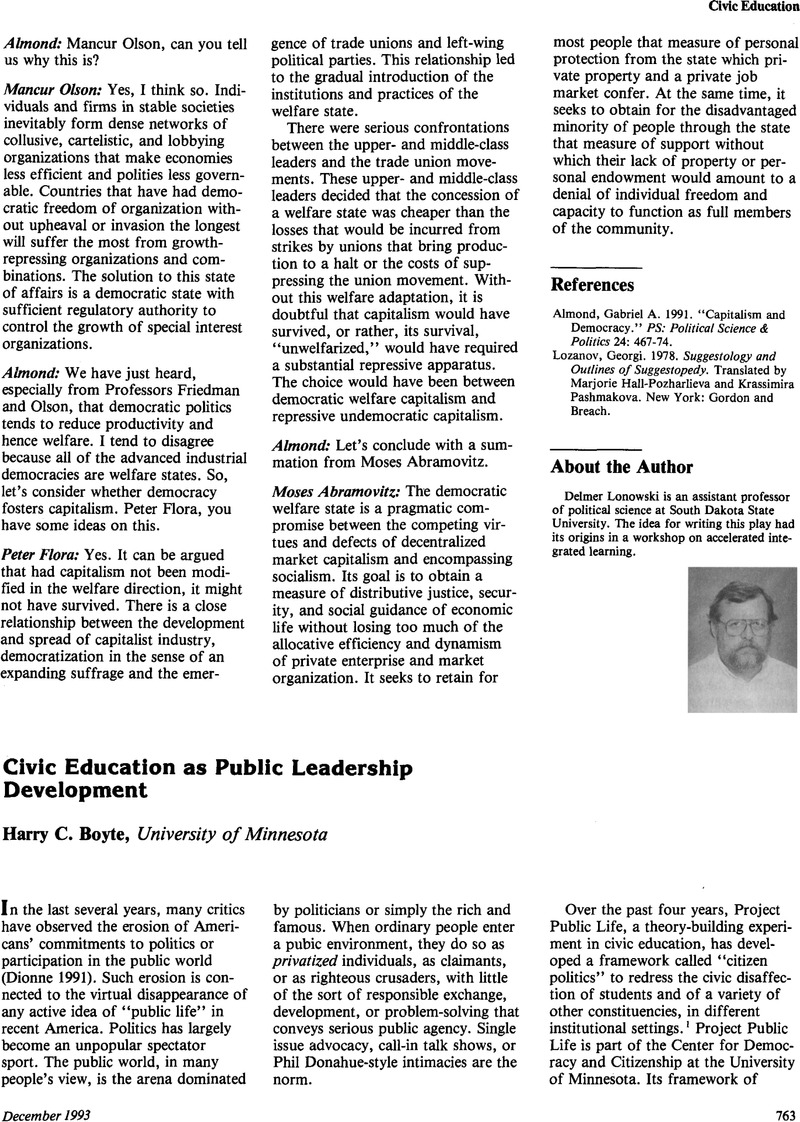Crossref Citations
This article has been cited by the following publications. This list is generated based on data provided by Crossref.
Weaver, Mark
1998.
Weber's Critique of Advocacy in the Classroom: Critical Thinking and Civic Education.
PS: Political Science & Politics,
Vol. 31,
Issue. 4,
p.
799.
Boeckelman, Keith
Deitz, Janna L.
and
Hardy, Richard J.
2008.
Organizing a Congressional Candidate Debate as Experiential Learning.
Journal of Political Science Education,
Vol. 4,
Issue. 4,
p.
435.
Assendelft, Laura van
2008.
“City Council Meetings Are Cool”: Increasing Student Civic Engagement Through Service Learning.
Journal of Political Science Education,
Vol. 4,
Issue. 1,
p.
86.
Fisher, Dana R.
2012.
Youth Political Participation: Bridging Activism and Electoral Politics.
Annual Review of Sociology,
Vol. 38,
Issue. 1,
p.
119.





